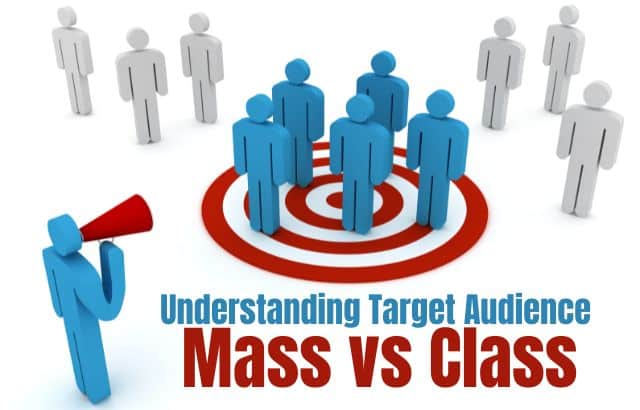In the realm of marketing and business strategy, identifying and understanding the target audience is a pivotal step towards achieving success.
Two primary approaches to categorizing audiences are often discussed: Mass and Class.
Each approach has its own set of characteristics, and businesses must carefully assess their products, services, and goals to determine which strategy aligns best with their objectives.
Table of Contents
What is Target Audience?
- The target audience refers to a specific group of individuals or consumers that a business aims to reach with its products or services.
- This group is identified based on various factors such as demographics, psychographics, behavior, and preferences.
- Understanding the target audience helps businesses tailor their marketing strategies to effectively connect with and engage the right consumers.
How to Find a Target Audience?
- Market Research: Conduct thorough market research to gather data on demographics, consumer behavior, and preferences.
- Customer Surveys: Engage with current customers through surveys to gather insights into their needs, preferences, and expectations.
- Competitor Analysis: Analyze the target audience of competitors to identify potential gaps or opportunities in the market.
- Social Media Analytics: Utilize social media platforms to gather data on audience demographics and engagement metrics.
- Focus Groups: Organize focus groups to gather qualitative data and gain deeper insights into consumer attitudes and opinions.
Why Defining a Target Audience is Very Important?
- Effective Communication: Understanding the target audience allows businesses to tailor their messaging to resonate with the specific needs and interests of the intended consumers.
- Resource Optimization: By focusing marketing efforts on a defined audience, resources can be allocated more efficiently, leading to cost-effective campaigns.
- Brand Relevance: Connecting with the right audience builds brand relevance and fosters stronger relationships, increasing the likelihood of customer loyalty.
- Improved Product Development: Insights into the target audience’s preferences and pain points aid in the development of products or services that better meet consumer needs.
- Competitive Advantage: Businesses that define and understand their target audience gain a competitive edge by delivering more relevant and personalized experiences.
Key Characteristics of Mass Audience Targeting
- Wide Reach: The primary advantage of mass targeting is the ability to reach a vast number of people across different demographics.
- Economies of Scale: Mass production and distribution often result in cost efficiencies due to economies of scale.
- Brand Awareness: Mass marketing is an effective way to build brand awareness quickly, especially for products with broad appeal.
Examples of Mass Audience Targeting:
- Fast Food Chains: Brands like McDonald’s or Coca-Cola employ mass marketing to appeal to a wide range of consumers.
- Household Products: Cleaning supplies or basic food items often target a mass audience due to their universal appeal.
Key Characteristics of Class Audience Targeting:
- Specific Demographics: Class targeting involves identifying and catering to a specific group based on factors like age, income, lifestyle, and preferences.
- Personalization: Marketing messages can be more personalized and tailored to the preferences of the target audience.
- Brand Loyalty: Building strong relationships with a niche audience often leads to higher brand loyalty and repeat business.
Examples of Class Audience Targeting:
- Luxury Brands: Companies like Rolex or Louis Vuitton target a high-income, discerning clientele.
- Specialized Services: High-end spa resorts or boutique fitness studios may focus on a specific demographic seeking exclusive experiences.
Conclusion: Choosing the Right Approach
The decision between mass and class targeting depends on various factors, including the nature of the product or service, marketing budget, and business goals. Some products thrive with mass appeal, while others find success by creating a sense of exclusivity and targeting a specific audience.
In conclusion, understanding the nuances of mass and class audience targeting is crucial for businesses aiming to maximize their marketing efforts. Striking the right balance between reach and relevance is key to building a sustainable and successful brand presence in today’s diverse marketplace.


























